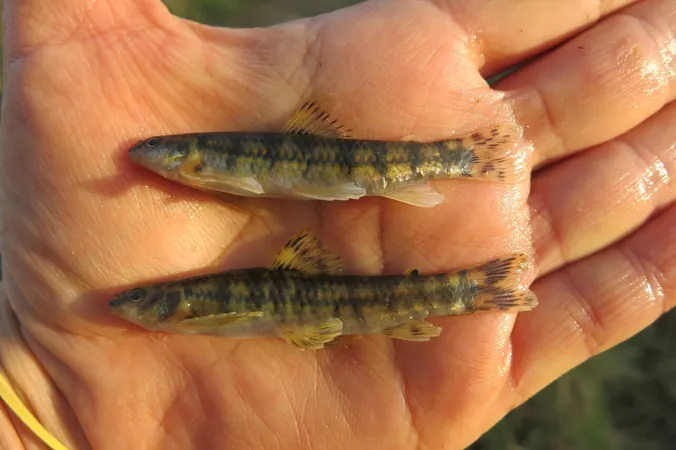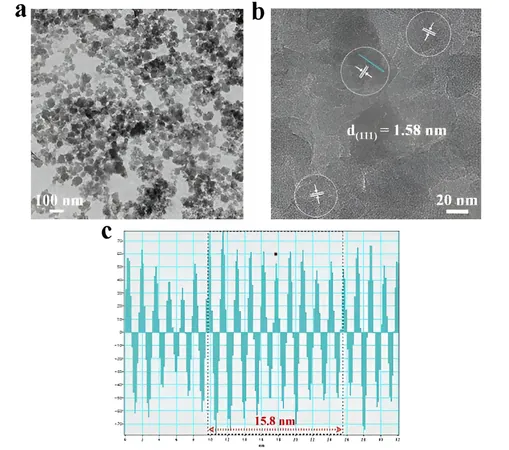
Unlocking Nature’s Secrets: Potential New Fish Species Discovered in the Characidium Genus!
2024-09-18
Introduction
In an exciting revelation for biodiversity enthusiasts and scientists alike, a recent study has identified the potential for new species within the Characidium genus, known for its remarkable diversity. Currently, this fish genus, endemic to the Neotropic region and affectionately referred to as mocinha or charutinho in Brazil, boasts 84 described species, making it possibly the most diverse fish genus on record!
Research Findings
Publishing their findings in the esteemed journal Systematics and Biodiversity, researchers from São Paulo State University (UNESP) and the Federal University of Bahia (UFBA) meticulously analyzed over 4,400 fish specimens from rivers across four distinct ecoregions in Northeast Brazil: Caatinga Nordeste e Drenagens Costeiras, Mata Atlântica Nordeste, Parnaíba, and São Francisco. Their groundbreaking research not only confirmed the presence of 15 species but also suggested that four of these could be novel to science, with one species distinctly yet unnamed!
Challenges in Species Identification
Lead researcher Leonardo Oliveira-Silva, who embarked on this mission during his Ph.D. journey, emphasized the complexity of species identification within Characidium. "Some of these fish look almost identical, leading to challenges in distinguishing them, both morphologically and genetically," he explained. The study also underscores how many specimens in scientific collections often lack precise species identification, making this research all the more critical.
Genetic Discrepancies
Diving deeper into their findings, the researchers uncovered discrepancies in genetic identification, with a startling revelation of less than 2% genetic distance between two morphologically distinct species—Characidium bimaculatum and Characidium deludens. Such findings raise important questions about traditional species categorization methods and the evolutionary histories of these fish. Oliveira-Silva pointed out that the common molecular marker used in distinguishing freshwater species may not always provide a black-and-white answer, prompting further analysis to better understand these relationships.
Phylogenetic Analyses
Intriguingly, previous studies had categorized Characidium as a monophyletic group (all species descended from a common ancestor), but new evidence suggests it may not fit this description. As the researchers delved into phylogenetic analyses, they found that several Northeast species share closer relationships with those from other South American ecoregions, hinting at a rich history of migration among these aquatic inhabitants when river systems were interconnected.
Future Directions
But the mission doesn’t stop there! The team, eager to uncover even more secrets of the Characidium fish, is set to expand their geographical focus. Oliveira-Silva’s ongoing research aims to encompass species from all South American rivers, enabling them to establish the most comprehensive phylogeny of the Characidium genus yet. Recent expeditions to Peru and Colombia have already yielded promising results, with samples from various species enriching their molecular analyses.
Conclusion
As Oliveira-Silva and Zanata continue their groundbreaking work, they not only hope to identify new fish species, but they also aim to unravel critical questions pertaining to biodiversity, conservation, and the delicate web of life within South American aquatic ecosystems. Stay tuned as we monitor this evolving narrative and discover what other surprises nature has in store!





 Brasil (PT)
Brasil (PT)
 Canada (EN)
Canada (EN)
 Chile (ES)
Chile (ES)
 España (ES)
España (ES)
 France (FR)
France (FR)
 Hong Kong (EN)
Hong Kong (EN)
 Italia (IT)
Italia (IT)
 日本 (JA)
日本 (JA)
 Magyarország (HU)
Magyarország (HU)
 Norge (NO)
Norge (NO)
 Polska (PL)
Polska (PL)
 Schweiz (DE)
Schweiz (DE)
 Singapore (EN)
Singapore (EN)
 Sverige (SV)
Sverige (SV)
 Suomi (FI)
Suomi (FI)
 Türkiye (TR)
Türkiye (TR)